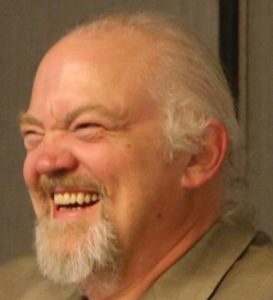The SNIA Storage Developer Conference (SDC) is coming up September 24-27, 2018 at the Hyatt Regency Santa Clara CA. The agenda is now live!
SNIA on Storage is teaming up with the SNIA Technical Council to dive into major themes of the 2018 conference. The SNIA Technical Council takes a leadership role to develop the content for each SDC, so SNIA on Storage spoke with Mark Carlson, SNIA Technical Council Co-Chair and Principal Engineer, Industry Standards, Toshiba Memory America, to understand why SDC is bringing Orchestration to conference attendees.
SNIA On Storage (SOS): When I think of “orchestration”, my first vision is of a conductor with a magnificent symphony. Am I on the right track in thinking this way?
Mark Carlson (MC): If you think of the conductor as the “automator” of the symphony, you’re right on! Orchestration for computing is the automated arrangement, coordination, and management of computer systems, middleware, and services. For example, cloud orchestration technology helps to manage the interconnections and interactions among public and private cloud infrastructure workloads.
SOS: What are some examples of orchestration?
MC: One example is in using software containers, which are applications built on a small set of supported libraries instead of on the full operating system. This is an efficient way to use the underlying infrastructure instead of firing up multiple versions of the operating system as Virtual Machines. Many organizations run microservices (small app components) in these containers, which can provide a simpler way to scale up a service in a much more fine-grained manner. Here, orchestration is the conductor – the person up front – who makes sure the microservices and container-based infrastructure playing the music are in tune and on time. There are many examples of container-based infrastructure, such as Kubernetes and Docker, evolving from the days when companies like Netflix moved to the cloud, created containers, and populated them with microservices.
SOS: Do companies and applications approach orchestration in the same way?
MC: Every container-based infrastructure has its own approach to orchestration and to the storage underlying the microservices. SNIA member volunteers work with a variety of standards bodies and organizations to support how storage operations work in orchestration. For example, Kubernetes is standardizing around an Application Programming Interface (API) for container storage interfaces (Container Storage Interface) that is an open source project. SNIA is working on that with the Cloud Native Computing Foundation (CNCF) to ensure it works for storage vendors and applications.
SOS: Why does the Storage Developer Conference agenda have a focus on orchestration?
 MC: With all the applications and approaches out there, it’s important for developers to learn about orchestration and containers in a vendor neutral environment as a foundation for understanding and evaluation. That’s where SNIA’s Storage Developer Conference plays a big role. Orchestration talks can be found in the agenda under the Cloud Storage, Storage Architecture, and Storage Management Tracks and feature speakers from Stanford University, HPE, DESY, Google, Portworx, Kasten, and NetApp.
MC: With all the applications and approaches out there, it’s important for developers to learn about orchestration and containers in a vendor neutral environment as a foundation for understanding and evaluation. That’s where SNIA’s Storage Developer Conference plays a big role. Orchestration talks can be found in the agenda under the Cloud Storage, Storage Architecture, and Storage Management Tracks and feature speakers from Stanford University, HPE, DESY, Google, Portworx, Kasten, and NetApp.
SOC: How can I get up to speed on orchestration topics before attending SDC 2018?
MC: SNIA has several great Brighttalk webcasts on containers that have thousands of views. Check out these titles.
Also, check out this video on Containers and Persistent Memory from the 2018 SNIA Storage Developer Conference India.
The 2017 SDC had a number of presentations on orchestration-related topics that are available via SNIA Video – and you can view the slides along with them. Check under the Cloud Storage and Containers headings.
Also check out the Storage Developer Conference Podcast Series, featuring 73 sessions from previous SDC events, with more arriving each month.
SOS: Does SNIA have a group focused on orchestration?
MC: SNIA’s Cloud Storage Technologies Initiative (CSTI) supports the evolving cloud business models and architectures, including OpenStack, software defined storage, Kubernetes, and object storage. You can check out a new blog on CSTI here.
SOC: Great to chat with you, Mark, and look forward to our next dive – into NVMe!